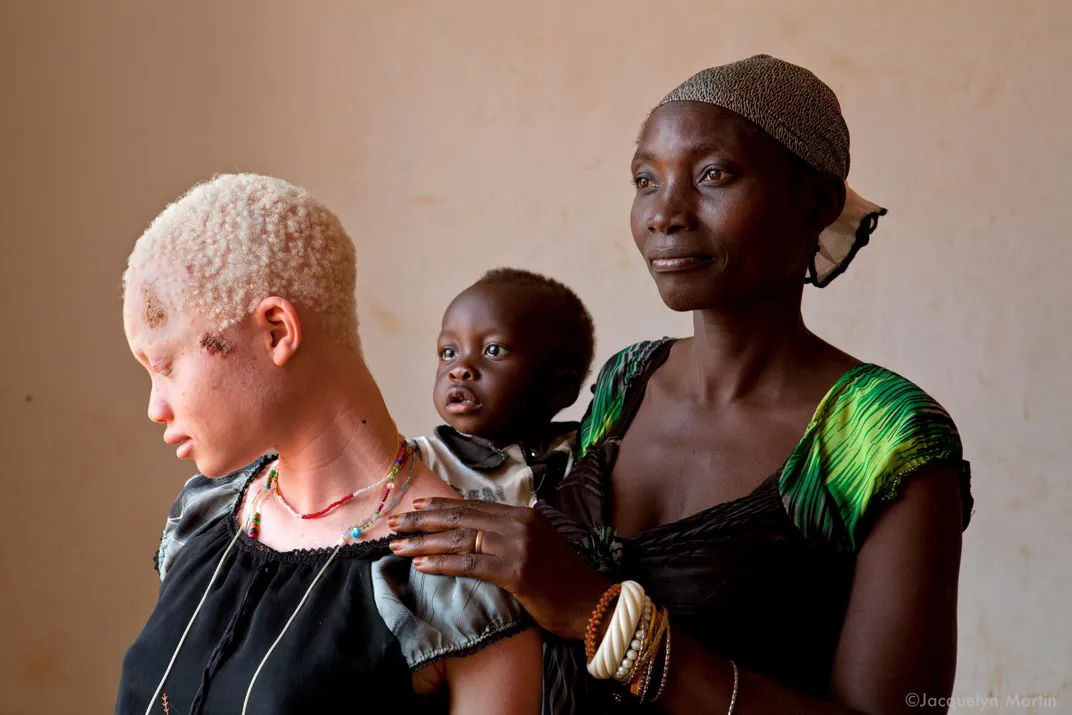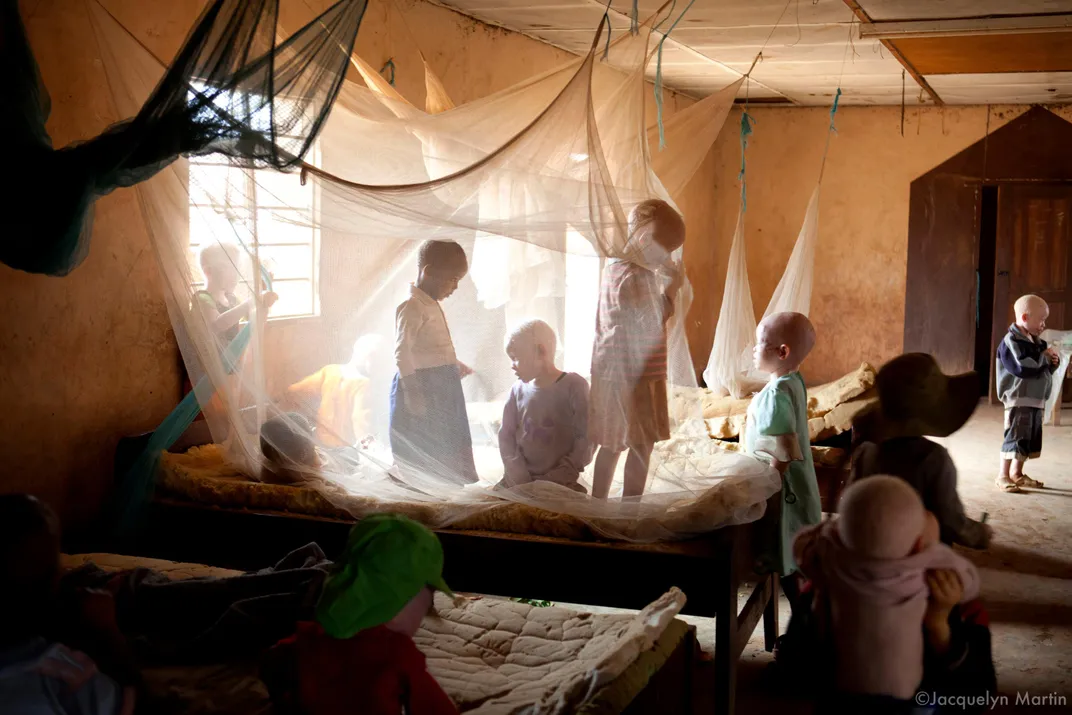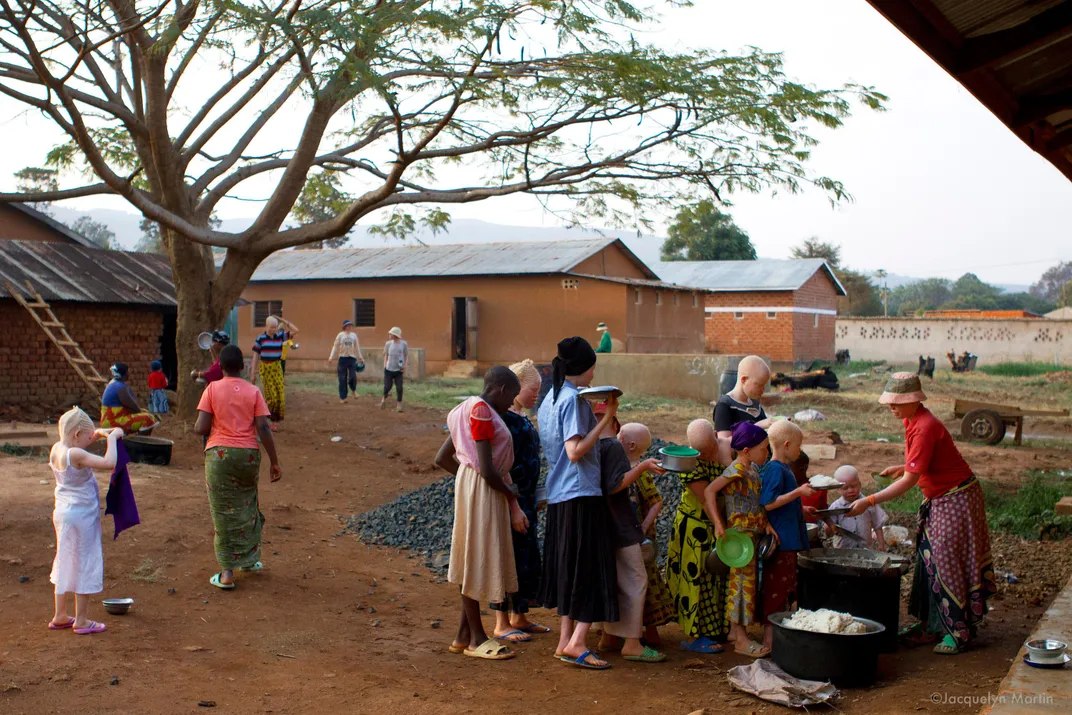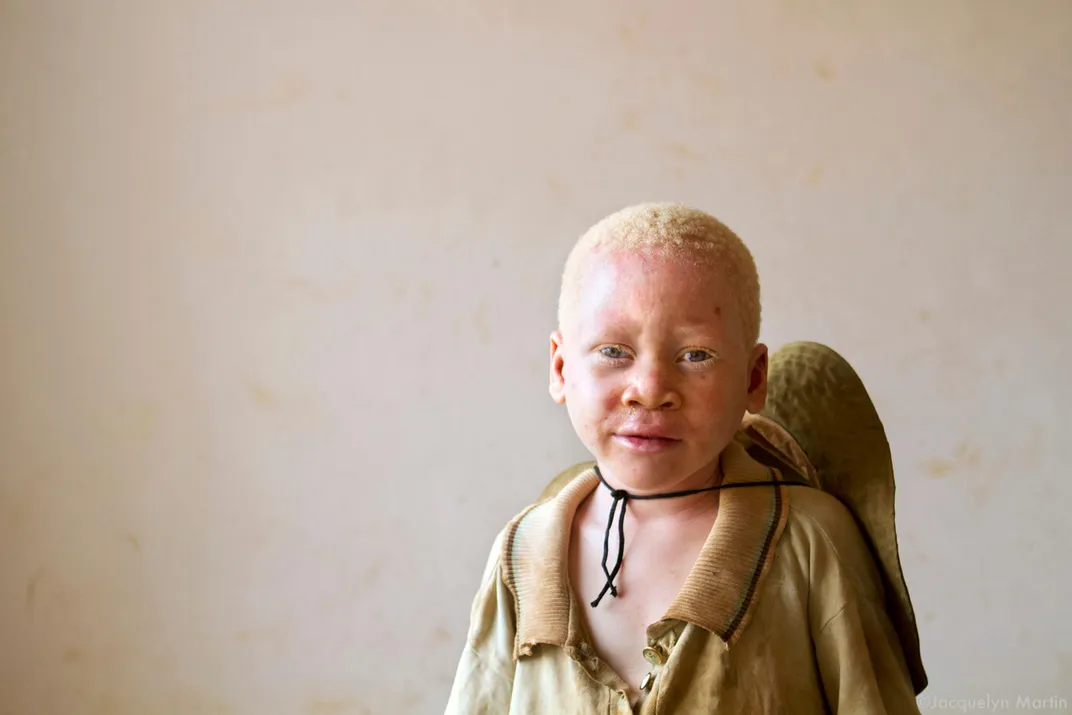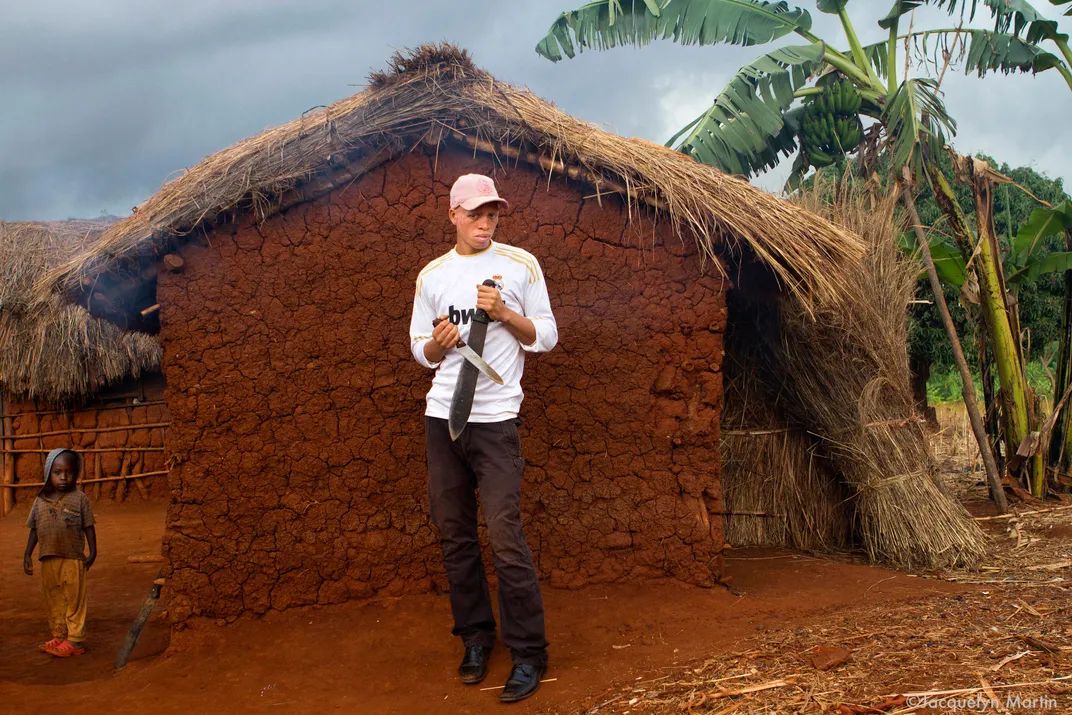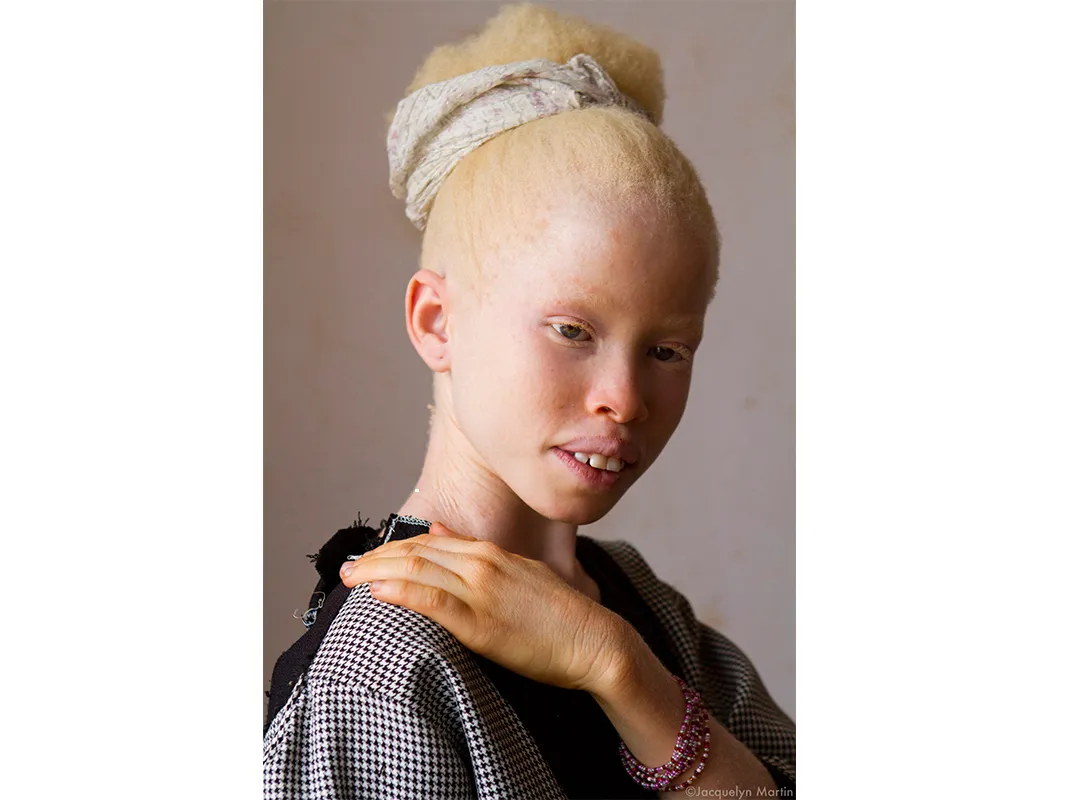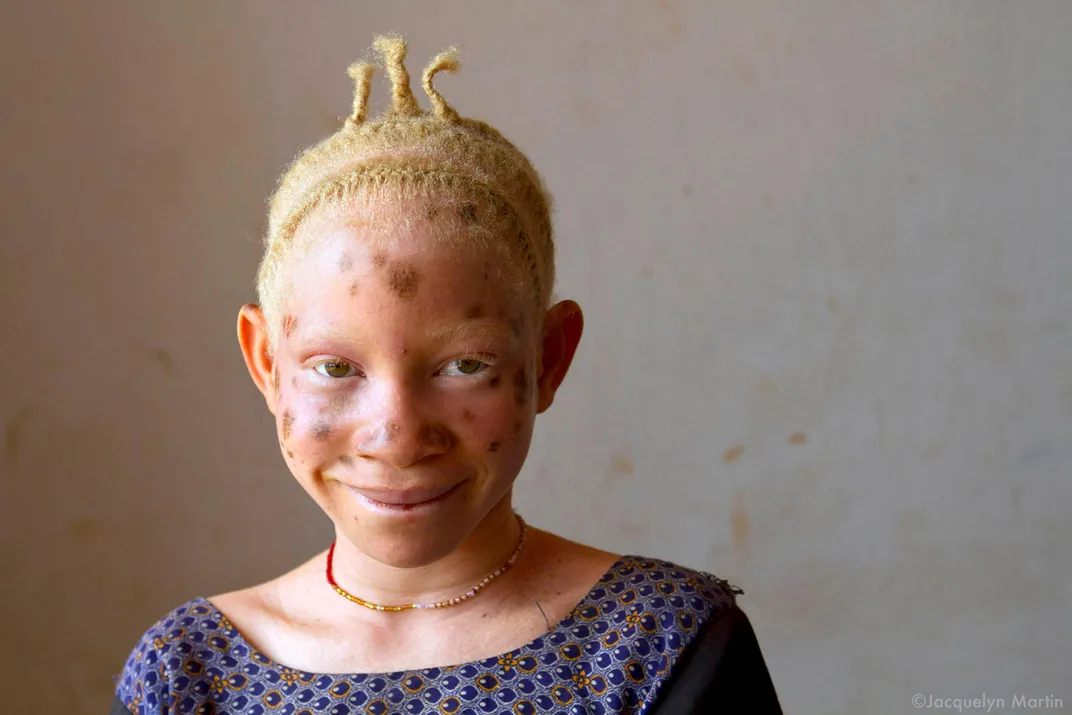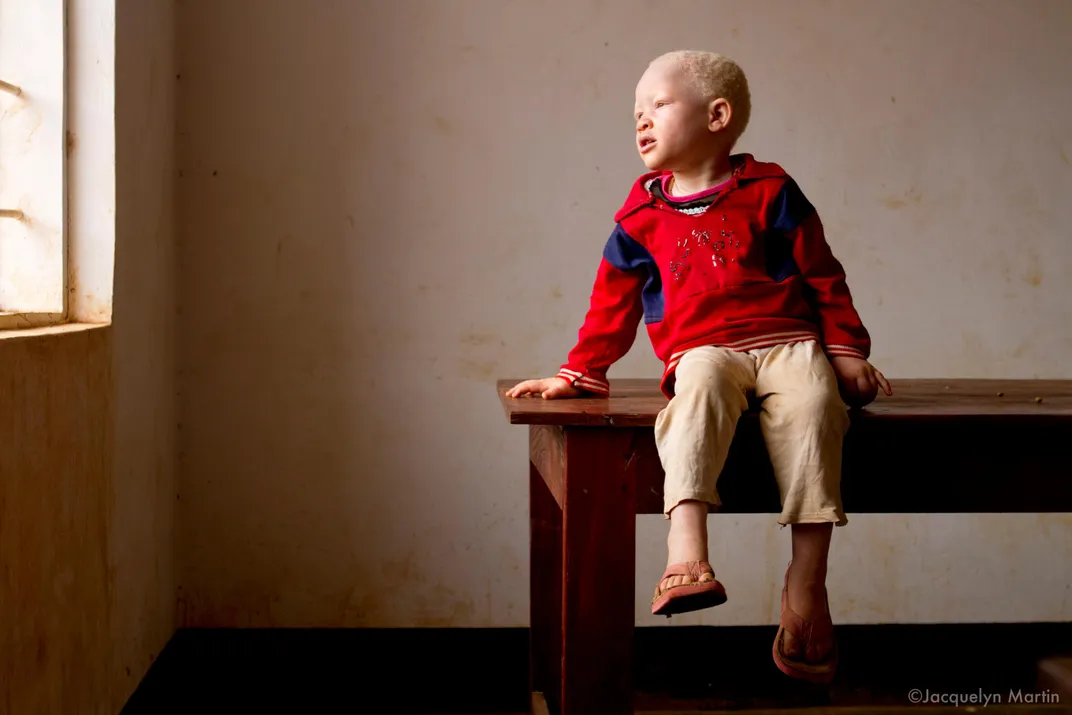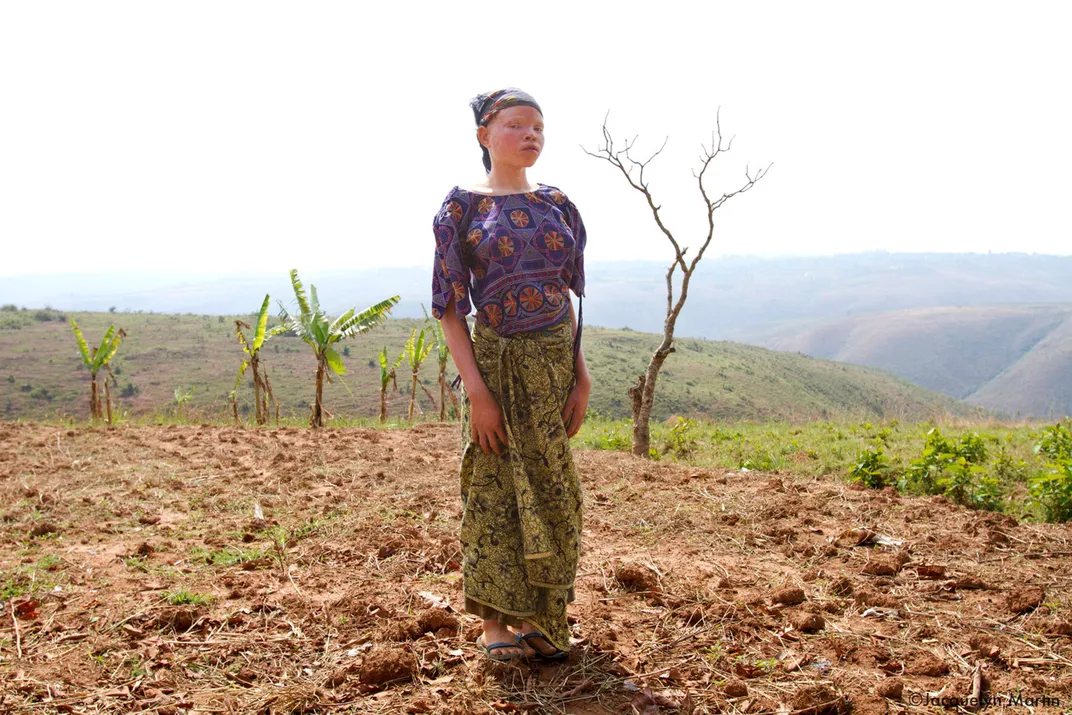Where Albinism Means Being Targeted for Murder or Dismemberment
Elsewhere in the world, people with albinism are at high risk for blindness and skin cancer. In Tanzania, the threats are much more severe
Worldwide, albinism is pretty rare – it occurs in just .005 percent of the human population. Caused by a genetic mutation that affects the production of melanin, the condition has plagued those who have it, not just because of the health issues that arise from it (although it does disproportionately result in blindness and has an increased risk of skin cancer), but also because of others’ prejudice against them. From H.G. Wells’ The Invisible Man to Dan Brown’s The Da Vinci Code, people with albinism have been portrayed as evil or mysterious.
As photojournalist Jacquelyn Martin has found, the rural villages of Tanzania aren’t so different. There, those with albinism are seen not as villains, but are coveted for their bones – local superstitions say that they can bring wealth and riches. Martin documented the lives of this group living in a protected village, where albinism becomes an issue of life or death.
I interviewed Martin about her series of photographs that have been featured this week on Smithsonian magazine’s Instagram feed. Follow our feed for more stunning work from photojournalists such as Martin.
How did you become aware of the issues for people with albinism in Tanzania?
In 2011, I was searching for inspiration on the web and came across a beautiful photo from 2006 by Johan Baevman of two children in a classroom in Tanzania. One had the deep rich skin tone that you might expect and the other was completely pale white. They were playing together, and it was a lovely moment. Then I read the caption about how the pale child had albinism, how people with albinism in Tanzania were being attacked by witch doctors for their body parts to use in magic potions to bring the user riches. I could find little about what was happening, since people had been placed into government centers, purportedly for their own safety. I wanted to find out what was happening to these people now and spent the next eight months researching. With contacts from Virginia based non-profit Asante Mariamu, I was able to travel to a center in rural western Tanzania in 2012.
Is there any movement to try to educate people or pass laws to stop these barbaric practices?
Under international pressure, the Tanzanian government in early 2015 banned witch doctors. The attacks have continued, however, including on a six-year-old child whose hand was amputated in an attack this past March. Until prosecution of attackers, and of buyers, really becomes a solid threat, I fear little will change. There is a large financial incentive for these attacks and the market would need to be eliminated to ensure future safety. Limbs sell in the hundreds of dollars, an entire body "set" is reported to fetch up to $75,000; this in a country where the annual median income is $600 or less. So the question becomes, who is doing the buying?
There are several international nonprofits working to raise awareness of what albinism is and why the attacks should end. Asante Mariamu, Standing Voice, and Under the Same Sun, all do work locally in Tanzania to try and end these practices, as well as protect people with albinism from skin cancer. Certain African countries have "albino societies," such as the Tanzania Albino Society, groups of people with albinism advocating for themselves. Social exclusion, skin cancer and low vision issues add to the challenges facing people with albinism. Some estimates say that as high as 98 percent of people with albinism die before the age of 35 due to skin cancer.
Is this a problem in other African nations or other places in the world?
It is by no means a Tanzanian problem alone, but the high numbers of people with albinism in Tanzania and traditional beliefs in black magic make it especially problematic there. A black market in body parts has no borders. Tanzania, Kenya, Burundi, and Malawi are among the 24 countries with reported attacks.
Do we know why the occurrence of albinism is so much higher in Tanzania?
No one knows the reason for certain. According to NPR, some scientists believe that the gene mutation may have originated there. Other studies point to rural communities where rates of intermarriage among albinos may be high, especially as people with albinism have been shunned in society. However most of the families I met neither parent had albinism, although of course both were carriers of the gene and did not know.
Which portrait or experience had the most impact on you personally?
It’s really hard to choose because all the subjects had such heartrending personal experiences, but I was particularly moved by Angel’s story. Angel was attacked by a group of men led by her own father, who saw his daughter in terms of dollar signs. Her maternal grandparents were killed while protecting her during the attack. So these deeply held superstitions led to not only Angel having to live in protective custody, but also the destruction of the whole family. When I met Angel, she expressed interest in being a journalist, but a year later she died from skin cancer; she was only 18 years old. So sad because this cancer is totally preventable if people with albinism wear protective clothing. She didn’t need to die.
Why do you do this work?
Part of the mission or calling to do this kind of photography is to help give a voice to the voiceless. I strongly feel that each person has their own voice, what I am able to do in amplify that voice so that more people can hear their experience. It's a great responsibility. A number of the people I interviewed and photographed told me themselves how empowering it felt that someone was interested in getting their story out in the larger world.
Can photography play a role in raising awareness of issues/ this issue in particular?
You always hope that what you do will raise awareness. Many people have told me that they had no idea this was still happening in the world. So the photographs are definitely educating people that this is an ongoing issue, it’s still happening. A six-year-old child was recently attacked; his hand was removed. And through this work I’ve been able to direct people who are interested in helping to the effective non-profits who are working on this issue.
I recently had an exhibition at the World Bank, which prompted discussions of how to increase social inclusion of people with albinism in their home countries, as a way to combat the superstitions and stigmas.
Personally, I have also gotten involved. These communities in Tanzania are so poor, so education is out of reach for most. I connected personally with two of the girls in the Kibanga protectorate who were very intelligent, but had no prospect of secondary education. Epafroida was an orphan, and has dreams of being a teacher. Ellen was also interested in higher education. Currently, I am sponsoring their education so they can become productive members of their society.

